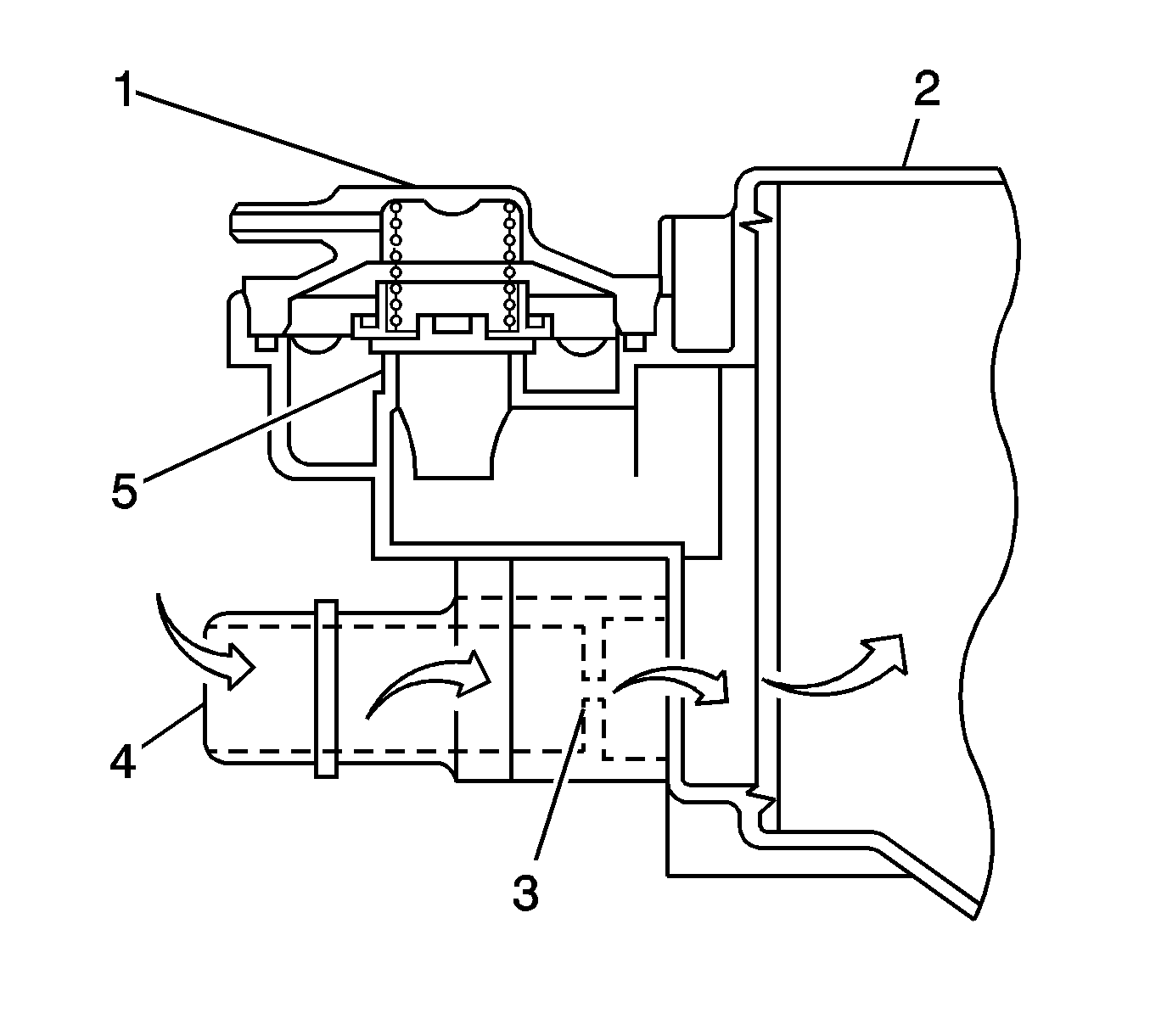The EVAP canister vent solenoid valve is an integral part of the EVAP vacuum leak pump assembly (2). The vent valve controls the flow of clean air into or out of (3) the EVAP canister. The vent valve is normally open. Under certain conditions
the PCM commands the vent valve closed in order to seal the EVAP system for leak diagnosis.
The fuel tank pressure (FTP) sensor, measures the difference between the fuel tank and outside air pressure. The FTP sensor is an integral part of the EVAP vacuum leak pump assembly. The PCM provides a 5-volt reference and a ground to the FTP sensor.
The FTP sensor provides a signal voltage back to the PCM that can vary between 0.1 and 4.9 volts. As the fuel tank pressure increases, the FTP sensor voltage decreases, as the fuel tank pressure decreases the FTP sensor voltage increases. High pressure = high
voltage. Low pressure vacuum = low voltage.
The EVAP filter (1) is attached to the EVAP canister and provides clean air for the purging of fuel vapors. Excess pressure in the EVAP system also flows thru the EVAP filter and is released into the atmosphere. The filter element is a sealed unit
and is not serviceable separately.

